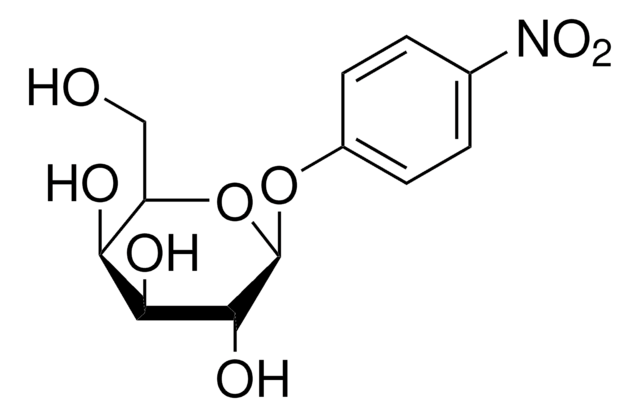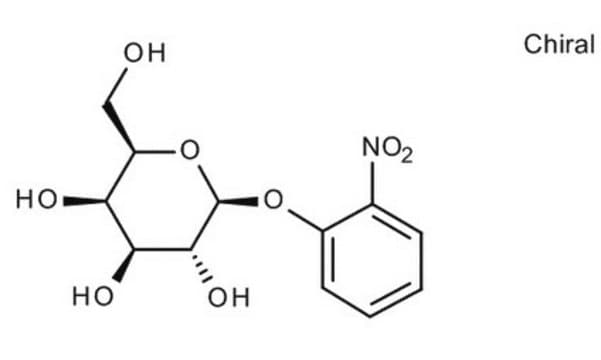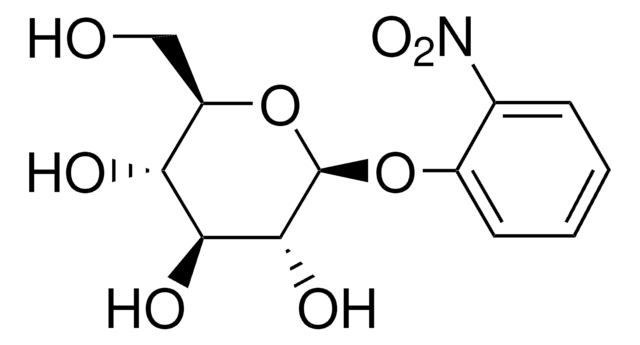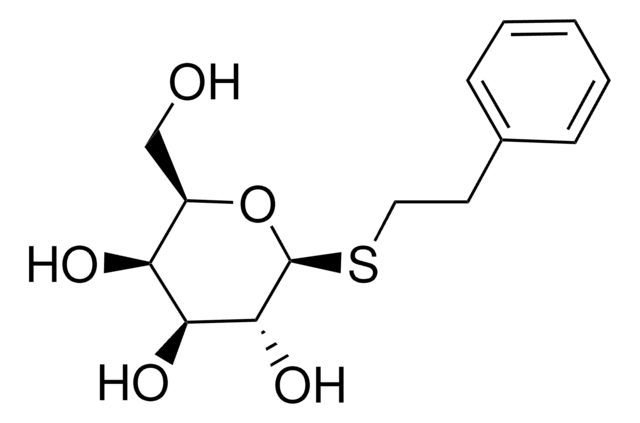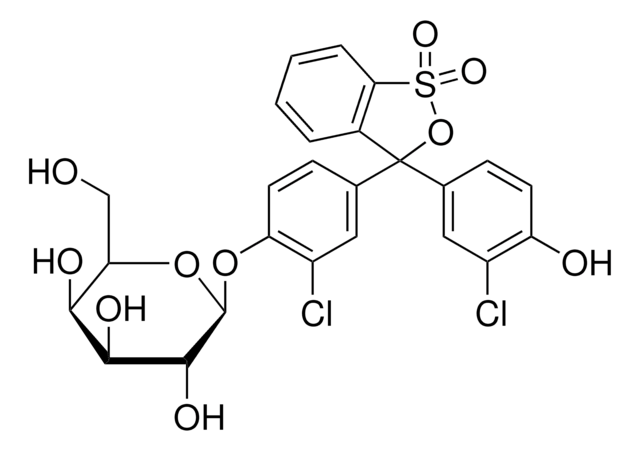Kluczowe dokumenty
N1127
2-Nitrophenyl β-D-galactopyranoside
≥98% (enzymatic)
Synonim(y):
ONPG
Wybierz wielkość
113,00 zł
Wybierz wielkość
About This Item
113,00 zł
Polecane produkty
klasa czystości
Molecular Biology
for molecular biology
Próba
≥98% (enzymatic)
Formularz
powder
temp. przechowywania
−20°C
ciąg SMILES
OC[C@H]1O[C@@H](Oc2ccccc2[N+]([O-])=O)[C@H](O)[C@@H](O)[C@H]1O
InChI
1S/C12H15NO8/c14-5-8-9(15)10(16)11(17)12(21-8)20-7-4-2-1-3-6(7)13(18)19/h1-4,8-12,14-17H,5H2/t8-,9+,10+,11-,12-/m1/s1
Klucz InChI
KUWPCJHYPSUOFW-YBXAARCKSA-N
Szukasz podobnych produktów? Odwiedź Przewodnik dotyczący porównywania produktów
Opis ogólny
Zastosowanie
Działania biochem./fizjol.
Zasada
Rekonstytucja
Substraty
Kod klasy składowania
11 - Combustible Solids
Klasa zagrożenia wodnego (WGK)
WGK 3
Temperatura zapłonu (°F)
Not applicable
Temperatura zapłonu (°C)
Not applicable
Środki ochrony indywidualnej
Eyeshields, Gloves, type N95 (US)
Wybierz jedną z najnowszych wersji:
Certyfikaty analizy (CoA)
Nie widzisz odpowiedniej wersji?
Jeśli potrzebujesz konkretnej wersji, możesz wyszukać konkretny certyfikat według numeru partii lub serii.
Masz już ten produkt?
Dokumenty związane z niedawno zakupionymi produktami zostały zamieszczone w Bibliotece dokumentów.
Klienci oglądali również te produkty
Produkty
Transformation introduces exogenous DNA into cells, a fundamental genetic modification process demonstrated in Streptococcus pneumoniae.
Protokoły
Yeasts are considered model systems for eukaryotic studies as they exhibit fast growth and have dispersed cells.
Active Filters
Nasz zespół naukowców ma doświadczenie we wszystkich obszarach badań, w tym w naukach przyrodniczych, materiałoznawstwie, syntezie chemicznej, chromatografii, analityce i wielu innych dziedzinach.
Skontaktuj się z zespołem ds. pomocy technicznej





